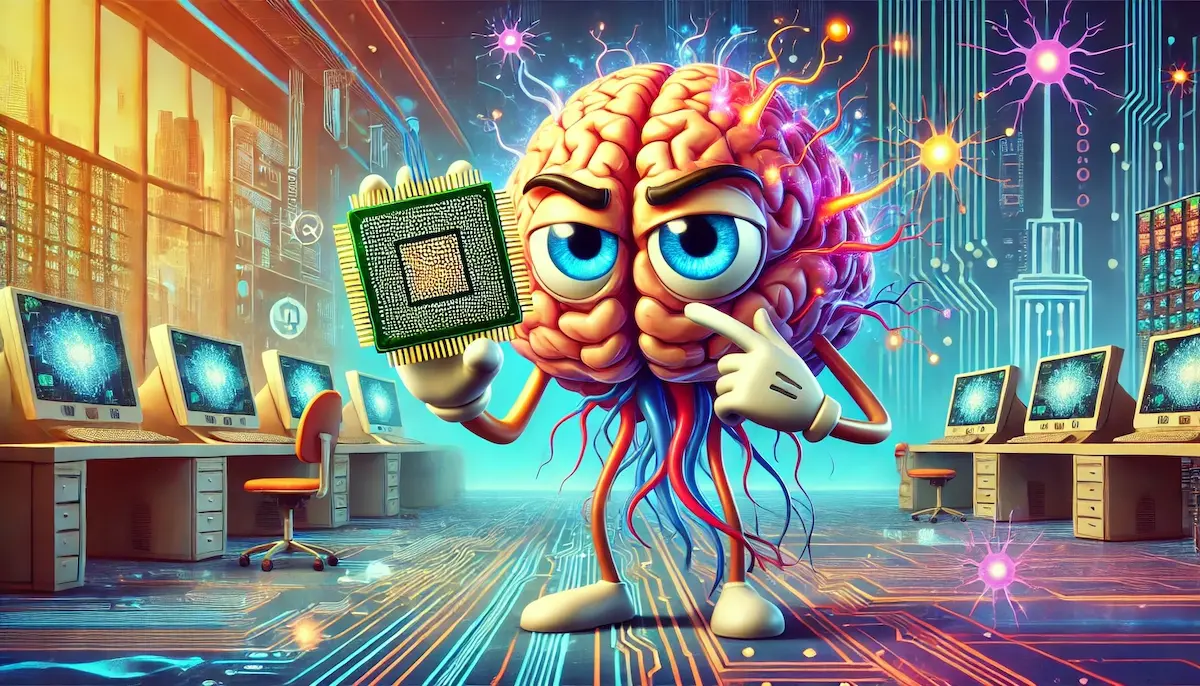Neuromorphic computing is an innovative approach to computing that seeks to mimic the neural structures and functionality of the human brain. By emulating the brain’s architecture and processes, neuromorphic systems aim to achieve greater efficiency, adaptability, and cognitive capabilities compared to traditional computing architectures. This technology has the potential to revolutionize fields such as artificial intelligence (AI), robotics, and sensory processing.
What Is Neuromorphic Computing?
Neuromorphic computing involves designing hardware and software systems that replicate the neural networks found in biological brains. These systems use specialized components that function similarly to neurons and synapses, enabling them to process information in a highly parallel and efficient manner.
Key Components
Artificial Neurons
Artificial neurons are the basic building blocks of neuromorphic systems. These components emulate the behavior of biological neurons, which process and transmit information through electrical signals. Artificial neurons can integrate multiple inputs and generate outputs based on their activation levels, similar to how biological neurons function.
Synapses
Synapses are the connections between neurons, facilitating communication and learning. In neuromorphic computing, artificial synapses are used to adjust the strength of connections between artificial neurons. This adjustment, known as synaptic plasticity, allows the system to learn and adapt over time.
Spiking Neural Networks (SNNs)
Spiking neural networks are a type of artificial neural network used in neuromorphic computing. Unlike traditional neural networks that process information in continuous values, SNNs use discrete events, or spikes, to transmit information. This approach more closely mimics the way biological neurons communicate and allows for more efficient and realistic modeling of brain activity.
Applications of Neuromorphic Computing
Artificial Intelligence
Neuromorphic computing can significantly enhance AI by providing more efficient and powerful processing capabilities. Neuromorphic systems can process vast amounts of data in parallel, enabling faster and more accurate machine learning models. This can lead to advancements in various AI applications, such as natural language processing, image recognition, and autonomous systems.
Robotics
In robotics, neuromorphic computing can improve the performance and adaptability of robots. By mimicking the brain’s sensory processing and motor control mechanisms, neuromorphic systems can enable robots to perceive their environment more effectively and make real-time decisions. This can enhance their ability to interact with humans and navigate complex environments.
Sensory Processing
Neuromorphic computing can revolutionize sensory processing by providing more efficient and accurate ways to interpret sensory data. Applications include advanced prosthetics that can respond to sensory inputs in real-time, and sensory devices that can process visual, auditory, and tactile information more effectively than traditional systems.
Brain-Machine Interfaces
Neuromorphic systems can be used to develop brain-machine interfaces (BMIs) that allow direct communication between the brain and external devices. This technology has the potential to restore lost sensory or motor functions in individuals with disabilities, offering new ways to interact with and control technology.
Advantages of Neuromorphic Computing
Energy Efficiency
Neuromorphic systems are designed to be highly energy-efficient, mimicking the brain’s ability to perform complex computations with minimal power consumption. This efficiency makes them ideal for applications where power is a limiting factor, such as portable devices and large-scale data centers.
Parallel Processing
Neuromorphic computing excels at parallel processing, allowing multiple computations to occur simultaneously. This capability is essential for tasks that require real-time data processing and analysis, such as autonomous driving and real-time image recognition.
Adaptability and Learning
Neuromorphic systems can adapt and learn from their experiences through synaptic plasticity. This ability to self-organize and adjust connections based on inputs enables more robust and flexible computing systems that can improve over time.
Challenges and Future Directions
Hardware Development
One of the main challenges in neuromorphic computing is the development of suitable hardware that can effectively mimic the brain’s neural structures. Creating reliable and scalable neuromorphic chips and components remains a significant technical hurdle.
Integration with Existing Technologies
Integrating neuromorphic systems with existing computing technologies and infrastructure is another challenge. Researchers are working on hybrid systems that combine traditional and neuromorphic computing elements to leverage the strengths of both approaches.
Algorithm Development
Developing algorithms that can fully utilize the capabilities of neuromorphic hardware is an ongoing area of research. These algorithms need to efficiently translate complex tasks into the spiking neural network framework used by neuromorphic systems.
Conclusion
Neuromorphic computing represents a paradigm shift in how we approach computing and artificial intelligence. By emulating the brain’s neural architecture and processes, neuromorphic systems offer significant advantages in terms of efficiency, adaptability, and cognitive capabilities. While there are challenges to overcome, the potential applications of neuromorphic computing in AI, robotics, sensory processing, and brain-machine interfaces are vast and promising. As research and development continue, neuromorphic computing is expected to play a crucial role in the future of technology and innovation.
Blockfine thanks you for reading and hopes you found this article helpful.
